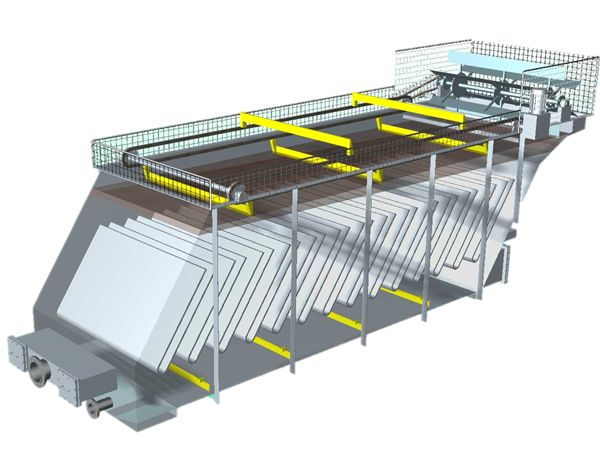The HORIZONTAL MEGACELL (MCH) is a unique design of dissolved air flotation clarifier.
The effluent is clarified using air micro-bubbles (40-100 microns) that cling to the particles and take them up to the surface of the water. This technique can also be used to separate so-called “solid” particles, i.e., which are of a substantial size. It has little effect on the so-called “colloidal” particles, which are very small and have difficulty in clinging to the air micro-bubbles.
The air micro-bubbles used for flotation are provided by the pressurisation system. The latter utilises clarified water which is recycled back into the air dissolving tube in which a quantity of air is dissolved under pressure. The air micro-bubbles are obtained when this air-saturated water is brought back to atmospheric pressure (the “excess” air is instantly released in the form of micro-bubbles).
The pressurised water containing the air micro-bubbles is combined with the untreated water in the inlet zone of the Megacell.
The Suspended matter is separated from the water in the MEGACELL MCH. The “heart” of Megacell is its “U”-shaped elements. This combines both co-current & counter current separation techniques.
The floated sludge accumulated on the water’s surface is continuously removed using a spiral scoop and discharged into a tank. The MCH size 12, 20, 25, 30, 35, 40, 50, 60 versions feature a surface scraper which pushes the floating sludge layer towards the scoop.
The difference between the water level (and with it the floating sludge layer) and the spiral shaped scoop is regulated either by a mechanical overflow weir (MCH 2 and MCH 4), or an automatic valve, which is monitored by a pressure detector.
In spite of the action of the air micro-bubbles, the particularly heavy particles with their tendency to settle (they are generally few in number), form a deposit at the bottom of the clarifier. They are then accumulated at the bottom of an inverted pyramid and are drained at intervals (MCH 2, 4, 8, 12). The larger-sized versions of the device have a flat base and are fitted with a sediment scraper, which pushes the sludge in the direction of a small sump from which they are drained at intervals.


